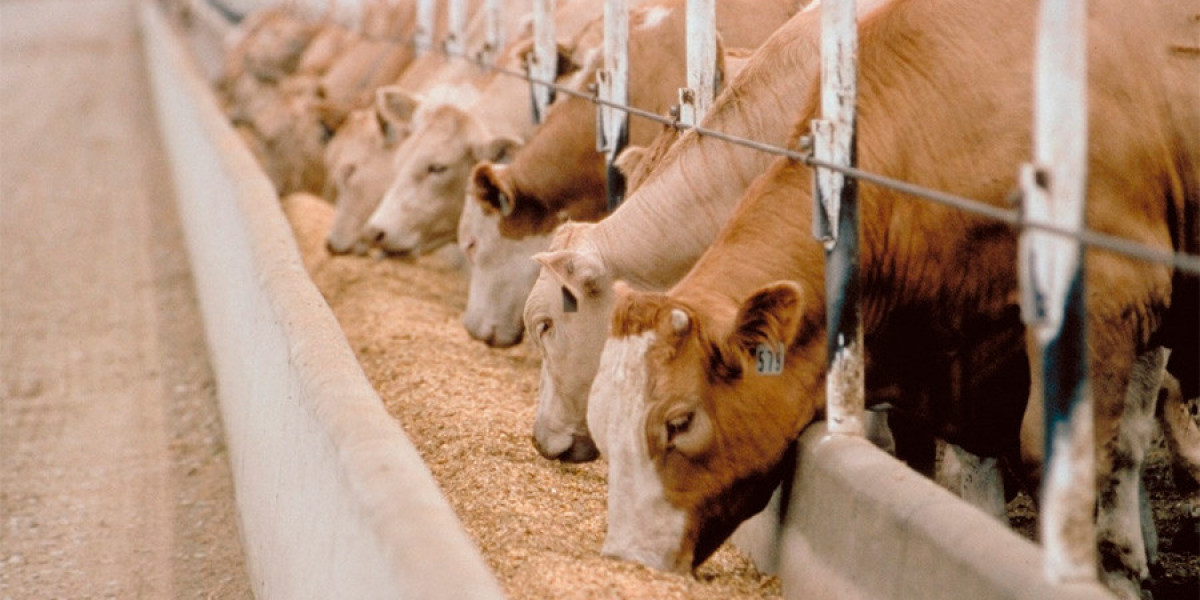The animal feed additives market is experiencing a wave of innovation as new formulations are being introduced to improve digestibility and animal welfare. Driven by consumer demand for sustainable farming and healthier animal products, innovations in feed additives are increasingly focused on optimizing nutrient absorption, supporting animal health, and reducing the environmental impact of livestock farming. These advancements are reshaping the landscape of the animal feed industry, ensuring that animals receive balanced, efficient nutrition while improving overall welfare.
Enhanced Digestibility: Key to Improving Feed Efficiency
One of the primary challenges in animal agriculture is ensuring that animals receive the maximum nutritional benefit from the feed they consume. Traditional feed formulations often leave certain nutrients underutilized due to issues with digestibility, leading to inefficiencies and higher feed costs. As a result, feed manufacturers are increasingly focusing on developing innovative additives designed to enhance the digestibility of feed, improving feed conversion rates and reducing waste.
Enzymes for Improved Digestibility: The inclusion of enzymes in animal feed has become one of the most significant innovations in enhancing digestibility. Feed enzymes break down complex molecules like fiber, proteins, and carbohydrates into simpler forms that animals can more easily digest. This leads to better nutrient absorption and improved growth rates. Phytase, for example, helps animals digest phytate, a form of phosphorus that is typically unavailable to them, while xylanase and cellulase break down complex plant fibers, making energy and nutrients more accessible to animals.
Probiotics and Prebiotics: Probiotics and prebiotics are becoming increasingly popular as digestive health solutions. Probiotics introduce beneficial microorganisms into the gut, improving gut flora and digestion. Prebiotics, on the other hand, stimulate the growth of these beneficial microorganisms, further supporting digestive health. Together, these additives enhance the overall functioning of the digestive system, boosting nutrient absorption, improving immune function, and reducing the need for antibiotics.
Amino Acids for Digestive Efficiency: The use of essential amino acids in feed formulations is another innovation driving improved digestibility. Amino acids are critical for protein synthesis and overall growth. By carefully balancing amino acids such as lysine and methionine in animal feed, manufacturers can enhance protein efficiency, promoting better digestion and faster growth. This innovation is especially important in the poultry and swine industries, where growth rates are a significant focus.
Innovations Focused on Animal Welfare
As consumers become more conscious of the ethical and health aspects of animal farming, there is an increasing demand for feed additives that not only improve productivity but also prioritize animal welfare. Innovations in feed formulations are now focusing on supporting animal health, reducing stress, and enhancing overall well-being.
Stress-Reducing Additives: Stress is a major factor that affects both the health and productivity of livestock. High-stress environments can lead to lower feed intake, reduced growth, and compromised immunity. To mitigate this, manufacturers are introducing additives that help manage stress in animals. Essential oils, such as eucalyptus and peppermint, have been shown to reduce stress levels in livestock by promoting calmness and improving feed intake. Similarly, certain amino acids and minerals are known to help reduce stress and improve animal resilience during periods of high stress, such as during transport or changes in environment.
Improved Gut Health: A healthy gut is essential for overall animal welfare, as it directly impacts nutrient absorption, immune function, and disease resistance. Innovations in gut health additives, such as immune-boosting vitamins and digestive enzymes, are helping improve the overall health and performance of animals. Additionally, the incorporation of functional lipids like omega-3 fatty acids in feed formulations has been shown to support gut health and reduce inflammation, contributing to better digestion and reduced incidence of disease.
Antioxidants for Immunity and Health: Antioxidants are increasingly being added to animal feed to support immune function and combat oxidative stress, which can negatively affect animal health. These additives help protect cells from damage caused by free radicals, support immune system efficiency, and improve overall vitality. Common antioxidants used in feed formulations include vitamin E, selenium, and beta-carotene. Their use is particularly prevalent in poultry and swine farming, where maintaining animal health is critical to preventing diseases and ensuring optimal growth.
Sustainable Feed Additives and Animal Welfare
Innovation in the animal feed additives market is also going hand-in-hand with a growing emphasis on sustainability. As farmers and feed manufacturers focus on improving the environmental footprint of their operations, there is a strong push for additives that promote sustainable farming practices while improving both animal welfare and feed efficiency.
Plant-Based and Natural Additives: There is a marked shift toward plant-based and organic feed additives, as these ingredients are seen as healthier for both animals and the environment. Ingredients like algae, seaweed, and herbal extracts are being integrated into feed formulations to provide additional nutrients while minimizing the environmental impact of animal farming. These natural additives are also in line with growing consumer preferences for clean-label products, which do not contain synthetic chemicals or growth promoters.
Circular Economy Initiatives: Many feed manufacturers are now exploring circular economy models, where waste materials from agriculture, food production, and even food processing are repurposed into feed additives. This approach reduces waste, improves feed sustainability, and promotes the efficient use of resources. Examples include using food by-products, such as fruit pomace and brewer’s yeast, as feed additives. These materials provide valuable nutrients to animals while helping reduce the overall environmental footprint of the farming industry.
Regulatory Compliance and Future Trends
With the growing demand for safe, sustainable, and effective feed additives, regulatory bodies worldwide are tightening standards to ensure the safety and quality of animal feed. The continuous evolution of regulatory requirements is pushing innovation in feed formulations, ensuring that new additives not only enhance digestibility and welfare but also comply with global food safety standards.
As the animal feed additives market continues to innovate, the focus will likely remain on sustainable, efficiency-boosting, and health-promoting ingredients. The rise of precision feeding, where feed is tailored to meet the specific nutritional needs of each animal, is expected to further drive the development of specialized feed additives.
Conclusion
Innovation in the animal feed additives market is increasingly focused on enhancing digestibility, improving animal welfare, and supporting sustainable farming practices. With the growing consumer demand for healthier, more ethically produced animal products, feed manufacturers are introducing new formulations that optimize nutrient absorption, support gut health, reduce stress, and ensure overall animal well-being. These innovations, coupled with regulatory support and sustainability trends, are reshaping the future of the animal feed industry, ensuring that it meets the demands of both consumers and farmers alike.
Learn more:-https://www.pristinemarketinsights.com/animal-feed-additives-market-report







